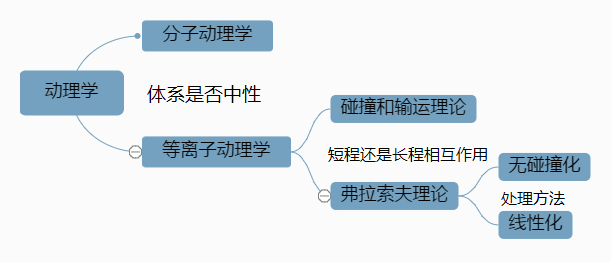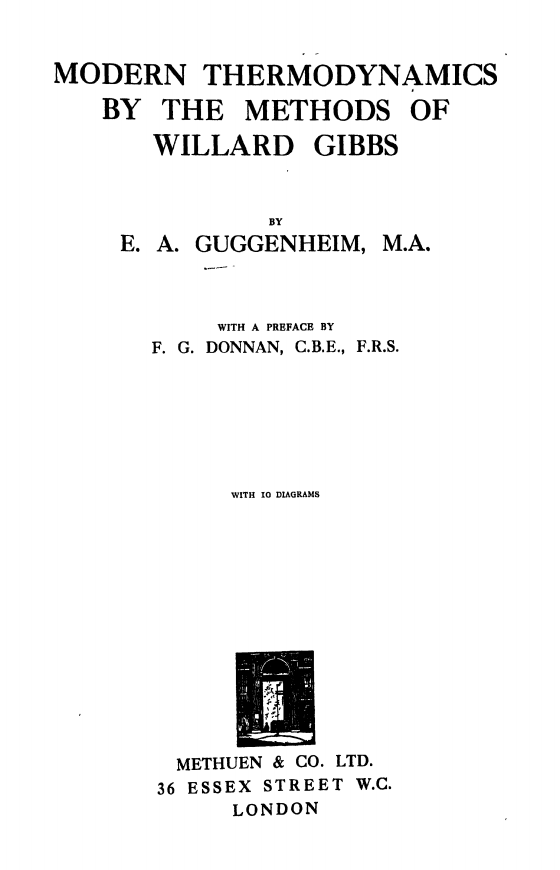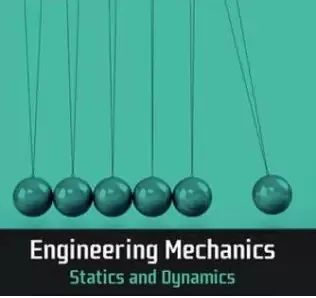Article directory
1. Explanation from Wikipedia
In physics and engineering, kinetics is the branch of classical mechanics concerned with the relationship between motion and its causes, especially forces and moments. Since the mid-20th century, the term "dynamics" (or "analytical dynamics") has largely replaced "kinetics" in physics textbooks, although the term The term is still used in engineering.
In plasma physics, kinetics refers to the study of continuity in velocity space. This is usually in a non-thermal (non-Maxwellian) velocity distribution or a process that perturbs the thermal distribution. These "kinetic plasmas" cannot be adequately described by fluid equations.
The term kinetics is also used to refer to chemical kinetics, especially in chemical physics and physical chemistry. In such uses, qualifiers are often used or implied, for example: "physical kinetics", "crystal growth kinetics", etc.
2. Explained in Hu Xiwei's book
The so-called kinetics studies the evolution of the distribution function of system particles in phase space. The distribution function of particles in phase space is the most accurate description of multi-particle systems.
When it was first introduced into China, kinetic theory was translated as "kinetics", but this is indistinguishable from dynamic theory in mechanics, and there are obvious differences in the processing objects and processing methods of the two. So later it was agreed to translate kinetic theory into "kinetic theory".
Both the kinetics method and the fluid mechanics method are theoretical tools for studying the physical properties of multi-particle systems (solid-liquid-gas, plasma, etc.), but the kinetics method is different from the three-dimensional coordinate space description of the fluid mechanics method. "coordinate-velocity" space to describe, and can also be extended to 6 N 6\ N6 N- dimensional space.
The reason why velocity space is needed to describe is that the behavior of some multi-particle systems is closely related to the velocity state of their particles, so it is not enough to describe only in coordinate space. The most common kinetic problem in multi-particle systems is the effect of particle interactions on their velocities and spatial states.
When the system is composed of neutral particles, the interaction between particles will only occur when they are close to the radius of atoms or molecules. We usually use collision to describe it. Therefore, the collision and the transport process caused by it are the earliest and most important research objects of the kinetic method. This is what we know as molecular kinetics.
However, if the system is composed of charged particles (such as a plasma system), they interact through the Coulomb force, even if the shielding effect caused by many bodies (ie Debye shielding) is considered, the force range of the Coulomb force is still much larger than the distance between particles . Therefore, when charged particles approach each other, they are subjected to long-term and long-distance interactions before collisions occur, which cannot be described only by collision and transport in molecular dynamics. The kinetic theory describing this kind of system is much more complicated than that of solid-liquid-gas.
Usually, the interaction between charged particles is bounded by the Debye length, which is qualitatively divided into two parts: the short-range interaction whose distance between particles is smaller than the Debye length and the long-range interaction which is larger than the Debye length.
For the short-range interaction, the collision image in the case of neutral particles is still used, but its quantitative description needs to be modified; while the long-range interaction involving a large number of particles is described by a self-consistent field. The characteristic time scales and spatial scales of these two types of physical processes in many plasmas can differ by many orders of magnitude, so they can be studied separately. In this way, two major parts of the plasma dynamics theory are formed: the collision and transport theory and the self-consistent field Vlasov (Vlasov) theory.
Kinetics deal with, often multivariate, 6 N 6\ N6 For highly nonlinear differential equations in N- dimensional space, it is basically impossible to obtain analytical solutions directly. The most commonly used simplifications are "collision-free" and "linearization".
The "no-collision" assumption is at the heart of Vlasov's theory. That is, assuming that the interaction between charged particles can be described by the effect of the field generated by all charged particles on a specific charged particle, and ignoring the short-range interaction between particles (such as "collision"), it is equivalent to the self-consistent field approximation (also called the mean field approximation). For the high temperature currently studied in magnetic confinement fusion ( > 1 ke V ≈ 1 0 7 K >1\ \mathrm{keV}\approx 10^{7}\ \mathrm{K}>1 keV ≈107 K ), short time (< 10 s <10\ \mathrm{s}<10 s ), this is a good approximation for energy-confined plasmas.
The so-called linearization means that when the state quantity can be divided into fast and slow parts according to the change rate of its space-time, the total evolution equation can be divided into zero-order (that is, the equilibrium or slow-changing part) and first-order (fast-changing) two parts. Set of linear equations.

Having said so many basic theories, now give an example of the practical application of kinetics.
In a magnetized plasma, when the radius of gyration of charged particles is smaller than the Debye length, the magnetic field will have an important impact on the collision dynamics. Many laboratory and natural plasmas are in extremely strong magnetic fields. For example, the maximum external magnetic field in magnetic confinement fusion plasma can reach 10 10The self-generated magnetic field strength in the 10 Tesla, inertial confinement fusion plasma reaches1 0 5 10^{5}105 Tesla, and the magnetic field in the plasma of white dwarf stars reaches 104 Tesla. Therefore, the research on plasma collision and transport process under strong magnetic field is of great significance to nuclear fusion and astrophysics. This is also the topic that our group is currently researching.
In plasma physics, according to the description method, it can be divided into two systems: fluid description and kinetic description. The two complement each other and are indispensable. You can find these two parts in any basic plasma physics textbook, and they are also the basic knowledge that every student majoring in plasma must master. If you just ask the required mathematical foundation, calculus, differential equations, differential geometry.
Kinetics can also be considered as a subject that describes the evolution of the distribution function of particle systems. Almost all systems composed of particles can be described and studied by kinetics. In addition to the previous plasma and neutral fluid, it can also describe radiation systems, star systems, and dust, and has a wide range of applications. For example, the dynamics of the stars in the galaxy and the dust in the interstellar medium can be described by the kinetic method, because the free path between stars is larger than the galaxy scale, and the free path of dust is similar to the galaxy scale, neither of which can be used Fluid assumptions, but it works fine with dynamics. Generally, describing a system with dynamics is also to study the time-dependent evolution of the system, quasi-static equilibrium, instability, and dispersion relations. The processing method used feels that the most commonly used analytical methods are linearization method and signal response theory. Because the equation is too nonlinear, computer simulation is required to obtain specific dynamic evolution. The linearization method uses perturbation expansion, which can only study the trend of perturbation growth, dispersion relationship, instability, etc. in the linear perturbation area. In addition, there are complex variable functions and the like, as well as the method of wave theory, because the study of wave-particle interaction and wave-wave interaction requires some nonlinear methods, and the method cannot be obtained from the physics department of a university. Mathematics, there should be no obstacles in reading
3. Prof. Hong Qian’s explanation
Kinetics is kinematics, and dynamics is dynamics. The former is just a mathematical description of motion, while the latter involves forces and energy and entropy. Today's theory, the former is based on stochastic mathematical modeling, while the latter only has equilibrium thermodynamics. The relationship between the two is not very clear, and it is something we want to figure out.
The logical relationship between chemical kinematics and chemical thermodynamics is the same. Their relationship has not been very clear until my work with Ge Hao in 2016 clarified this issue. In fact, it is necessary to clarify the concept of chemical potential (a kind of entropy force) within the framework of kinematics.
In Landau's tenth volume, kinetics has a double identity: it is also a product of applied Newtonian mechanics (this is the content of many-body problems and continuum mechanics), that is, the application of Newtonian dynamics in multi-scale complex systems . This is the unfulfilled dream of Boltzmann et al. We now have a whole new Gibbs perspective.
In history, there are many people who have done time-related problems from this perspective, such as Richard Threlkeld Cox. Note that they all emphasized the "Gibbs method" back then. For example the following articles and books:
E. A. Guggenheim, Modern Thermodynamics by the Methods of Willard Gibbs

4. Teacher Chen Kuifu explained
There is no difference between the words Dynamics and kinetics in the fields of physics and mechanics, but now the academic circles like to use dynamics. The Collins dictionary data (including common usage) is: dynamics is about 10 times more frequently used than kinetics. The reason why the frequency of the former is high may be related to the fact that dynamic has power (vigor) semantics, while the original meaning of kinetic relating to muscular motion (related to muscle movement) is relatively narrow.

The etymology network interprets dynamics as a branch of physics that calculates motions in accordance with the laws of force (a branch of physics that calculates motion according to the laws of force). If this interpretation is correct, then dynamics is more inclined to "find motion (dynamic inversion)". But most dictionaries say that dynamics includes statics (statics) and kinetics. Some people don't like to use kinetics. These authors often divide dynamics into kinematics (kinematics) and kinetics, and statics is a special case of kinetics.
The original meaning of Kinetic is relating to muscular motion, which is derived from the Greek kinetikos, which means moving, putting in motion (muscles can move the limbs). In modern English, kinetic is only used in physics, meaning "pertaining to motion".

Dynamic is opposite to static, and its semantic meaning is pertaining to mechanical forces not in equilibrium, pertaining to force producing motion (related to unbalanced mechanical force, related to force producing motion). There is dynamikos in Greek, and the German mathematician Leibniz created the French word dynamique, which later entered English as dynamic.
Dynamikos has powerful semantics, which are still reserved for dynamic, such as
【例句1】He seemed a dynamic and energetic leader.(He seemed to be a dynamic and energetic leader.)
Dynamic has the meaning of "dynamic change", such as
【Example sentence 2】Political debate is dynamic. (Political debate is dynamic.)
In addition, dynamic can be a noun (and countable), and its semantics is a generalized force that causes a process or system to change, such as
【Example sentence 3】Politics has its own dynamic. (Politics has its own dynamic.)
Dynamics can be the plural form of the noun dynamic, such as
【Example sentence 4】The exchange of ideas aids an understanding of family dynamics. (The exchange of ideas helps to understand the interactive relationship of family members.)
Of course, in the field of physics and mechanics, dynamics mostly understand "dynamics" in a narrow sense, and it is uncountable.
Kinematic is derived from the French cinématique (a word created by Ampere in 1834), which is derived from the Greek kinēsis, meaning movement, motion, which does not involve force, that is, pure "kinematics". Now cinema (film art) is also a cognate word, and its original meaning is "projecting a series of pictures in rapid succession to produce the illusion of movement [equipment]".
However, kinetic energy is kinetic energy (not kinematic energy).
Physiology and chemistry also use kinetics and dynamics. The former refers to the change process of the concentration of the substance of interest, and the latter generally refers to the interaction mechanism involving the molecular microscopic level. When used, the adjective chemical is often added in front of the two to eliminate misunderstandings.
The field of toxicology has the same semantic chemistry of toxicokinetics and toxicodynamics. The field of pharmacology has pharmacokinetic (pharmacokinetics) and pharmacodynamics (pharmacodynamics).
Systems in the biochemical domain are different from mechanical systems. The research object of a mechanical system is often a system with few degrees of freedom. For this type of system dynamics, the changes of all degrees of freedom will be studied.
In the field of biochemistry, we all know that what works is at the level of molecules and atoms. If we investigate the changes in the degree of freedom of each molecule or atom, we can definitely grasp the dynamic evolution of the entire system, but the cost is too high, because There are too many molecules and atoms in the system, so we have to pursue the average change of the system, that is, the concentration change of the parameter of interest in the system, which is the kinetics of kinetics.
However, we clearly know that the final effect mechanism is the interaction between the molecular level, especially the interaction between the drug and the target macromolecule, which corresponds to the dynamics.
For mechanical systems, there is generally no distinction between system and single molecule requirements (except for statistical mechanics), so the difference between kinetics and dynamics is very small.
- references
"Principles of Plasma Physics" by Hu Xiwei 2012
"Plasma Theoretical Basis" by Hu Xiwei 2006
What kind of subject is physical kinetics?
Dynamics and kinetics, is there any difference between the two words?